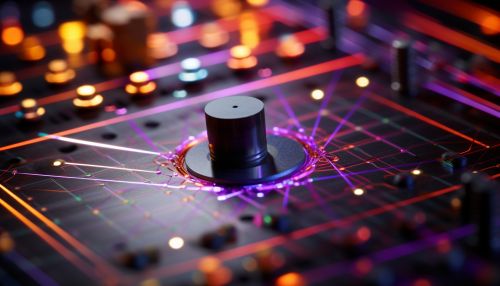Quantum Computing with Photonic Quantum Circuits
Introduction
Quantum computing is a rapidly evolving field that leverages the principles of quantum mechanics to perform computational tasks. Photonic quantum circuits, which utilize photons as quantum bits (qubits), are a promising approach in this domain. This article delves into the intricacies of quantum computing with photonic quantum circuits, exploring their design, operation, and potential applications.
Quantum Computing Basics
Quantum computing is fundamentally different from classical computing. While classical computers use bits as their smallest unit of data, quantum computers use qubits. A qubit can exist in a superposition of states, allowing it to represent both 0 and 1 simultaneously. This property, along with entanglement and quantum interference, enables quantum computers to solve certain problems much more efficiently than classical computers.
Photonic Quantum Circuits
Photonic quantum circuits are a type of quantum computing architecture that uses photons as qubits. These circuits are built using quantum optical components such as beam splitters, phase shifters, and single-photon sources and detectors. Photons have several advantages as qubits: they are robust against many types of environmental noise, they can be easily manipulated with established optical technologies, and they can transmit information over long distances without loss.


Designing Photonic Quantum Circuits
The design of photonic quantum circuits involves arranging optical components in a way that allows for the manipulation and measurement of photonic qubits. This requires careful consideration of the properties of photons and the optical components used. For example, beam splitters are used to create superposition states, while phase shifters can adjust the phase of a photon, affecting its state. The design process also needs to account for potential sources of noise and loss in the circuit.
Operating Photonic Quantum Circuits
Operating a photonic quantum circuit involves generating single photons, guiding them through the circuit, and then measuring their states. Single-photon sources emit photons one at a time, which are then sent into the circuit. The photons interact with the optical components in the circuit, changing their states in a way that performs a quantum computation. Finally, single-photon detectors are used to measure the states of the photons, providing the output of the computation.
Applications of Photonic Quantum Circuits
Photonic quantum circuits have a wide range of potential applications. In quantum communication, they can be used to transmit quantum information over long distances. In quantum computation, they can perform tasks such as quantum simulation and quantum machine learning. Photonic quantum circuits can also be used in quantum metrology, where they can provide highly accurate measurements.
Challenges and Future Directions
Despite their potential, photonic quantum circuits face several challenges. Noise and loss in the optical components can degrade the performance of the circuits. Additionally, generating and detecting single photons is a difficult task that requires precise control. However, ongoing research is addressing these challenges, and the future of photonic quantum circuits looks promising.
